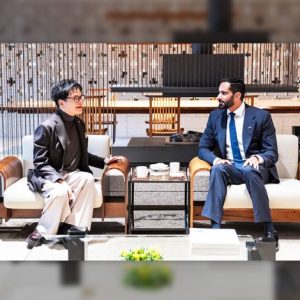Despite the growing call for environmental protection action on a global scale, environmental pollution, specifically from plastic waste, continues to be a mounting concern. According to a survey titled ‘The Path to Plastic-Free’ conducted by the Anti-Corruption & Civil Rights Commission in August 2021, 97.8% of the respondents cited an awareness of the severity of plastic pollution. These statistics are a driving force behind this series which aims to highlight the actions that must be taken to protect not only the environment, but also mankind.
Many companies are already taking practical action towards environmental protection and CJ CheilJedang is also joining this movement. The company is going beyond simple slogans and presenting various action plans including reducing plastic usage based on the circular economy. Here’s how CJ CheilJedang is responding to society’s demand for eco-friendliness through research, technology and sustainable solutions.
The Environmental Protection Movement Gains Support

The urgent attention placed on environmental protection is nothing new, and we have known about the risks of pollution for decades. Accordingly, many action steps have been taken in the forms of awareness campaigns, prevention agreements and improvements to existing environmental protection measures.
In 2015, an agreement to prevent global warming through the reduction of greenhouse gases was introduced at the United Nations Climate Change Conference, and in 2017, environmental organizations including Greenpeace demanded top-tier, global consumer packaged goods (CPG) companies to actively respond to environmental issues. Subsequently, many environmental organizations discouraged the use of plastic through slogans like ‘Plastic Free’, Zero Plastic Zero’, and ‘No Plastic’.
In 2018, Swedish youth environmental activist, Greta Thunberg, started the #FridaysForFuture movement in which the 15-year-old skipped school to protest for climate action outside of Swedish Parliament. Millions of students around the world have now joined this cause. Furthermore, U.S. President Joe Biden’s administration is also earnestly carrying out projects for achieving carbon neutrality. Of course, there is a widespread perception that plastic should still be used in terms of safety and hygiene due to the COVID-19 pandemic, but the attention on an eco-friendly future still remains.
Why is the Circular Economy Gaining Attention?

The production cycle of existing companies is largely carried out in accordance with a linear economy. In this system, resources are collected, factories mass-produce the product, consumers buy the product and finally dispose of the product when they finish using it. Though it allows for rapid expansion and profitability, the consequences of this linear economy model are seen through environmental pollution. In particular, plastics, which cause considerable harm to the environment, are either not re-used or completely removed according to this model.
In response to these drawbacks, the circular economy has emerged as a new, more sustainable model. Circular economy refers to the concept in which the consumed product becomes a resource and is used as a raw material for manufacturing new products. Based on a circular economy model, every stage of a product’s journey is considered both before and after it reaches the customer, such as recycling or upcycling. Through this system, it can be said that the groundwork for a less harmful use of plastic, which is the main contributor of environmental pollution, has been laid.
Many global companies are currently taking the lead in implementing sustainable practices in line with a circular economy. At Unilever, food-grade recycled material, which is a renewable material available for food packaging, was used in its Magnum ice cream packaging in the second half of 2020. For Procter & Gamble, brands such as Ariel, Lenor and Dash that previously used a non-recyclable multi-layer pouch to prevent changes to the products’ existing contents are now converting to a single, recyclable pouch.
CJ CheilJedang Embraces a Circular Economy Through Sustainable Packaging

Taking a focused look at the food industry, the most important area for food product companies to consider when transitioning to a circular economy is their packaging. The packaging of processed foods serves many purposes such as protecting the food contents and serving as a point of connection and communication with consumers. It helps maintain the taste and quality of the contents in addition to providing customers with important product information such as expiration date, nutrition facts and branding. But in light of growing environmental concerns, the role of packaging has shifted. In addition to its practical uses, product packaging now represents change, development and an eco-friendly way forward and therefore must be easily recyclable.
In line with this, CJ CheilJedang has been conducting various technology studies into eco-friendly packaging. Following the company’s introduction of its Sustainable Packaging Policy in 2016, CJ CheilJedang established a research and development (R&D) department that specializes in developing packaging materials. The department’s 32 professional packaging researchers study and explore pioneering packaging-related technologies.
In particular, these researchers are designing packaging based on a circular economy and developing 3R-based technologies. This 3R-based technology involves components such as eco-friendly packing design (Redesign), using renewable materials (Recycle) and the use of nature-based, eco-friendly raw materials (Recover) from its pre-production stage. Efforts have also been focused on studying and developing a practical way to use less plastics produced through natural gas or crude oil, referred to as virgin plastics. As a result, the company has been creating a positive impact on the eco-friendly packaging ecosystem by reducing the amount of plastic used in the container of its instant rice, Hetbahn, and making the recycling process easier through using a water-soluble adhesive (a glue that can be dissolved in water) on product labels.
Following the official UN declaration of achieving net zero emissions by 2050, a focus on eco-friendly practices such as strengthening environmental, social and governance (ESG) activities and adapting to the circular economy era is essential. Since packaging emits carbon both during its production and in the process of post-consumer consumption, now is the time to consider a way to minimize its negative environmental impacts. In the next article in this series, we will take a deeper look into the story behind CJ CheilJedang’s eco-friendly packaging design, which is just one of the ways CJ is materializing its commitment to a greener, more sustainable future.












